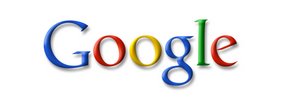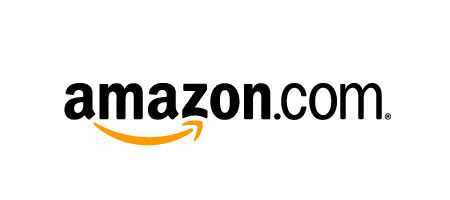By: Stephen Axel
SVP, Robertson Lowstuter
When was the last time you Googled yourself? And when you did, were the results positive? Negative? Or maybe you didn’t find anything about yourself. In all of these situations, you can make it better but first let’s discuss ‘why’ it matters.
Whether you like it or not, your personal brand exists both offline and online. In the real world, your interaction and encounters with others builds your ‘offline’ brand, literally one person at a time. For the most part you get to choose who you build that relationship with and how. However, in the online world, it is a totally different story.
Search engines and their technology ‘spider’ assistants are very indiscriminate. They track and index everything that is posted on the World Wide Web to make vast amounts of information usable. Once your name is typed into that search box by a prospective employer or an executive search firm, the search engine will display anything it can find related to your name. It doesn’t matter if the article is 5-years old and completely inaccurate, your personal brand gets immediately tarnished. So, how do you know what your online brand identity is?
Start Here
 First of all, establish a baseline. Google and Yahoo yourself and see what you find. (These two search engines delivered 89% of all web searches through March, 2009). Click all the links that reference you and find out it if they are accurate. If the information is out-of-date and you posted it, fix it. If you find something blatantly false, contact that site and tell them you need to correct their record(s). Remember, what you found, others will find, too.
First of all, establish a baseline. Google and Yahoo yourself and see what you find. (These two search engines delivered 89% of all web searches through March, 2009). Click all the links that reference you and find out it if they are accurate. If the information is out-of-date and you posted it, fix it. If you find something blatantly false, contact that site and tell them you need to correct their record(s). Remember, what you found, others will find, too.
So, now that you know what is out there (or not) about you, here is a list of strategies to take greater control of our online brand identity:
Business Networking Sites
From LinkedIn to Plaxo, these business-focused networking sites are extremely well tracked by the search engines due to the richness of information that is aligned with a name. LinkedIn is the defacto standard in business networking with 35 million+ members and Plaxo is associated with Simply Hired, a job aggregating web site. You owe it to yourself to have your profile listed at one (or more) of the professional networking and have ALL of the information up-to-date. Talk about control…you can tell your story exactly how you want it told and even put your best picture with it, to boot! (Yes, I think having your picture is very important as it immediately differentiates you from someone else’s page of pure text.) In regards to LinkedIn, definitely create your own unique URL using your name (linkedin.com/in/yourfullname or if that is taken, add a descriptor in it like ‘johnsmithCFO’). This will help the search engines find your profile, as well.
Social Networking Sites
It’s fine to have a Facebook or MySpace page, but just remember EVERYONE gets to see it. This isn’t ‘what happens in Vegas stays in Vegas’, it is more like ‘what happens in Vegas ends up on Facebook,’ and that can be a scary thought. In researching this article, I decided to search for my picture using Google Images (http://images.google.com). To my surprise, my Facebook picture came up 1st out of 556,000 hits! What didn’t surprise me was it was my coat and tie picture. Similarly, don’t get caught by surprise on what you have posted on these social networking sites and make sure everything is ready for prime time viewing.
ZoomInfo.com
This web site is a cross between a LinkedIn and a search engine that recruiters love to use. Knowing that search firms like to use this search engine gives you an advantage. Why not populate this search engine with your own information and picture? This way you at least have relevant, up-to-date material in case search firms are trying to find out information about you. No charge, it’s free.
Write an Amazon Book Review
If you like to read, this is an easy one. Once you finish a book (and I suggest it be one that you  want people to know you read), take a look at the existing book reviews. What are they missing or is there a more interesting way to say it? Click on ‘Write a Review’ and set up your personal profile along with your picture. Make sure to add ‘key words’ or tags to your review to enable easier search engine notice. Once again, you are taking control over what the search engines can find out about you. In fact, Google has a very tight relationship with Amazon so there is an increased chance that your name/book review will be picked up when people are searching on your name.
want people to know you read), take a look at the existing book reviews. What are they missing or is there a more interesting way to say it? Click on ‘Write a Review’ and set up your personal profile along with your picture. Make sure to add ‘key words’ or tags to your review to enable easier search engine notice. Once again, you are taking control over what the search engines can find out about you. In fact, Google has a very tight relationship with Amazon so there is an increased chance that your name/book review will be picked up when people are searching on your name.
Contributing to a Blog
A blog is an article, or a series of articles, related to any topic. Interestingly, people who actively contribute to blogs can find themselves being interviewed by the press and journalists given their topic of expertise. Why? 1) Blogs are text intense and search engines love to track and index their content; and 2) When journalists are writing new stories/looking for a new story angles, they will search blogs to see who-knows-what. When Robertson Lowstuter decided to do its own Executive Blog, we decided to use the standard blogging site WordPress.com. Why WordPress? They are owned by Google. To prove the point: If you search on Google for ‘Bill Colaianni blog’, the top 3 out of 4 links are Bill’s R|L blog.
Given the rapidly expanding digital world we live in—YouTube, Twitter, Flickr, etc—be constantly vigilant about your online brand identity. Practice Googling/Yahooing yourself on a routine basis and proactively managing your online brand identity. It’s yours to control.
